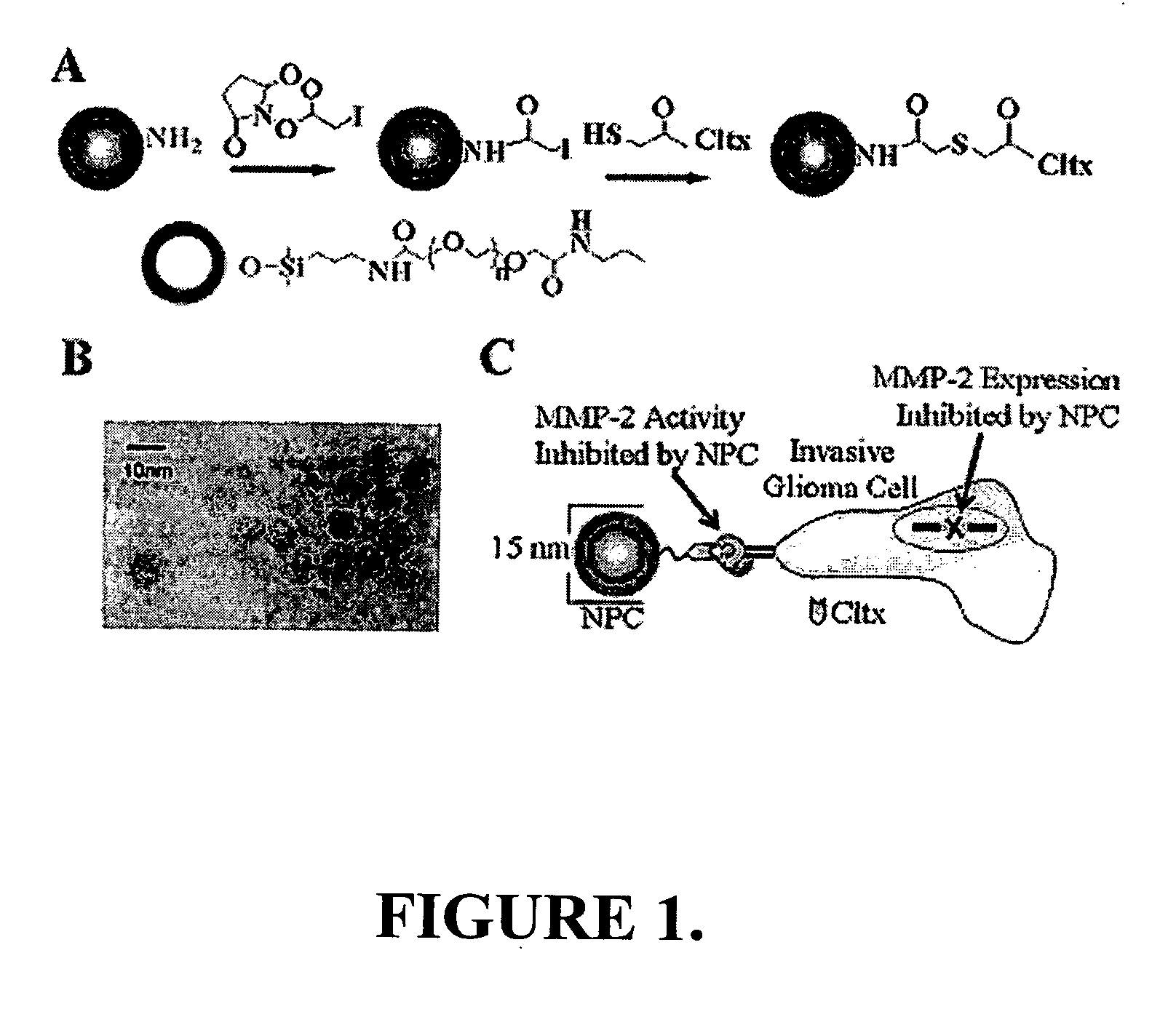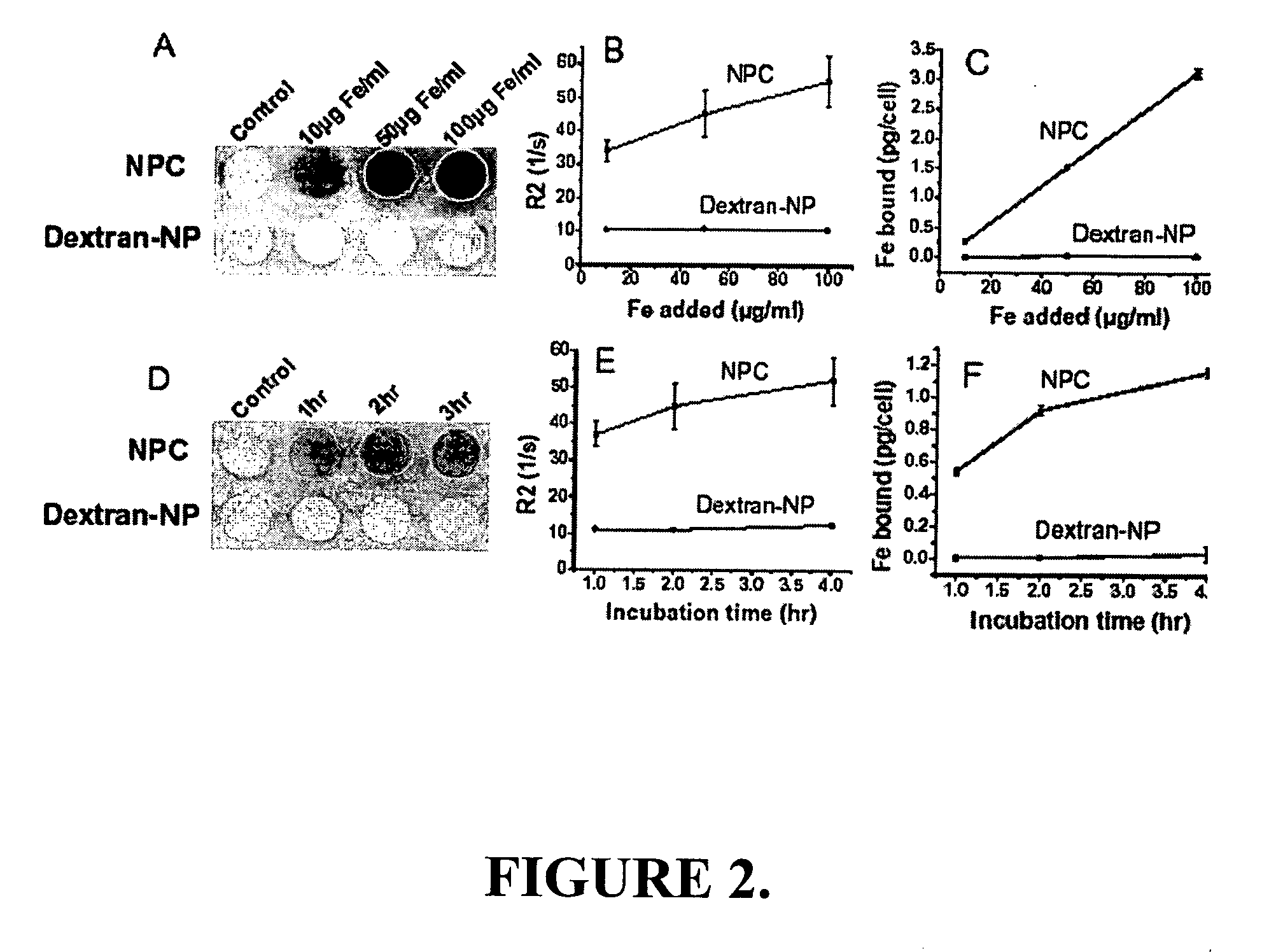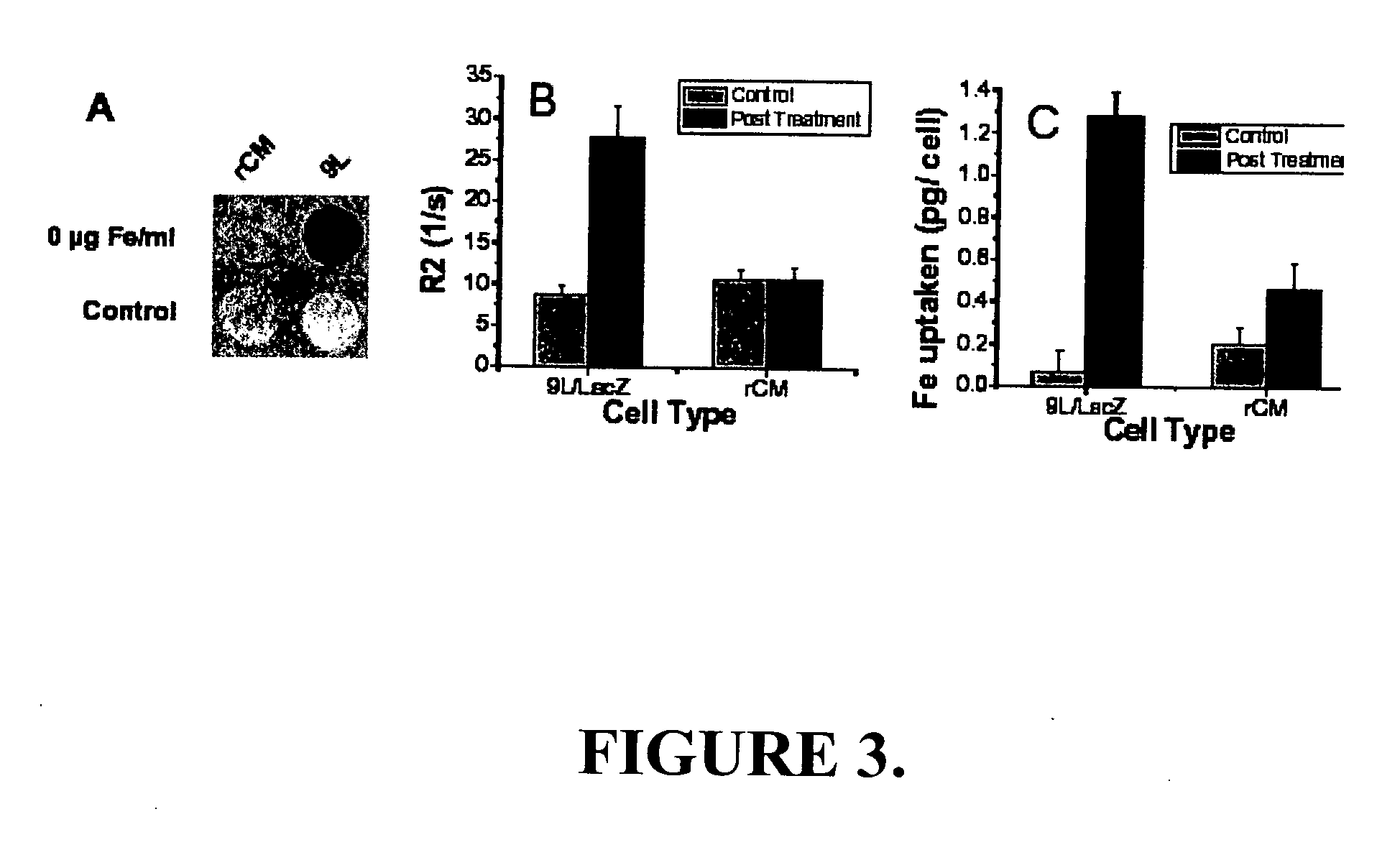Chlorotoxin-labeled nanoparticle compositions and methods for targeting primary brain tumors
a technology of chlorotoxin and nanoparticles, which is applied in the direction of drug compositions, peptide/protein ingredients, instruments, etc., can solve the problems of severe limitations in the effectiveness of tumor resection in neurosurgery, none of the targeted tumors have been shown to specifically target the vast majority of gliomas, and the difficulty of malignant gliomas to be treated
- Summary
- Abstract
- Description
- Claims
- Application Information
AI Technical Summary
Benefits of technology
Problems solved by technology
Method used
Image
Examples
example 1
The Preparation of Representative Chlorotoxin-Labeled Nanoparticles
[0146] In this example, the preparation of representative chlorotoxin-labeled nanoparticles (e.g., a chlorotoxin-labeled nanoparticle referred to herein as “NPC”) of the invention is described.
[0147] Materials. All chemicals were obtained from Sigma-Aldrich (St. Louis, Mo.) and all reagents for cell culture were obtained from Invitrogen (Carlsbad, Calif.) unless otherwise noted. Chlorotoxin (Cltx) was purchased from Alomone (Jerusalem, Israel).
[0148] Synthesis of nanoparticle-PEG-chlorotoxin conjugates (NPC). A schematic illustration of the preparation is shown in FIG. 1A. Iron oxide nanoparticles (NPs) were first surface-modified with a trifluoroethylester-terminal PEG silane which was then converted to an amine terminated PEG silane as described in Zhang et al., J. Am. Chem. Soc. 2004, 126:7206-7211, expressly incorporated herein by reference in its entirety. Cltx was conjugated to the amino end groups of nanopa...
example 2
The Uptake of Representative Chlorotoxin-Labeled Nanoparticles
[0151] Cell culture. Rat gliosarcoma (9L, ATCC, Manassas, Va.) and rat cardiomyocytes (rCM, Cell Applications, San Diego, Calif.) cells were grown in DMEM and rCM medium respectively, supplemented with 1% streptomycin / penicillin and 10% fetal bovine serum FBS. On the day of experiment, cells were incubated with pre-warmed cell culture medium containing NPs. Following incubation, cells were washed twice with cell culture medium and twice with PBS, then trypsinized and suspended in a 4:1 (v / v) solution of PBS and cell culture medium.
[0152] Quantification of nanoparticle uptake. Nanoparticle uptake by cells was determined through the measurement of iron concentrations by inductively coupled plasma atomic emission spectroscopy (ICP-AES). Cell samples were prepared by dissolving the cell pellets in 200 μl of concentrated hydrochloric acid (HC1) for 1 hr at 60° C. and then analyzed on a Jarrell Ash 955 ICP-AES spectrophotomet...
example 3
Therapeutic Effect of Representative Chlorotoxin-Labeled Nanoparticles
[0157] The therapeutic effect of free chlorotoxin is due to its ability to limit further expression of the surface-bound MMP-2 and inhibit its enzymatic activity, subsequently inhibiting tumor migration and invasion. FIG. 1C illustrates conceptually the binding of a NPC to a glioma cell, in which the NPC inhibits the activity of MMP-2 endopeptidase and its further expression by glioma cells. Upon binding of chlorotoxin to the endopeptidase, the cellular invasion pathway by endopeptidase is blocked. At the same time, this interaction induces a second physiological response through down regulation of further MMP-2 expression. This dual action alters the invasive behavior of glioma cells.
[0158] To evaluate the therapeutic potential of NPCs and retention of chlorotoxin therapeutic functionality after nanoparticle conjugation, a transwell migration assay was performed.
PUM
| Property | Measurement | Unit |
|---|---|---|
| diameter | aaaaa | aaaaa |
| diameter | aaaaa | aaaaa |
| thickness | aaaaa | aaaaa |
Abstract
Description
Claims
Application Information
 Login to View More
Login to View More - R&D
- Intellectual Property
- Life Sciences
- Materials
- Tech Scout
- Unparalleled Data Quality
- Higher Quality Content
- 60% Fewer Hallucinations
Browse by: Latest US Patents, China's latest patents, Technical Efficacy Thesaurus, Application Domain, Technology Topic, Popular Technical Reports.
© 2025 PatSnap. All rights reserved.Legal|Privacy policy|Modern Slavery Act Transparency Statement|Sitemap|About US| Contact US: help@patsnap.com



